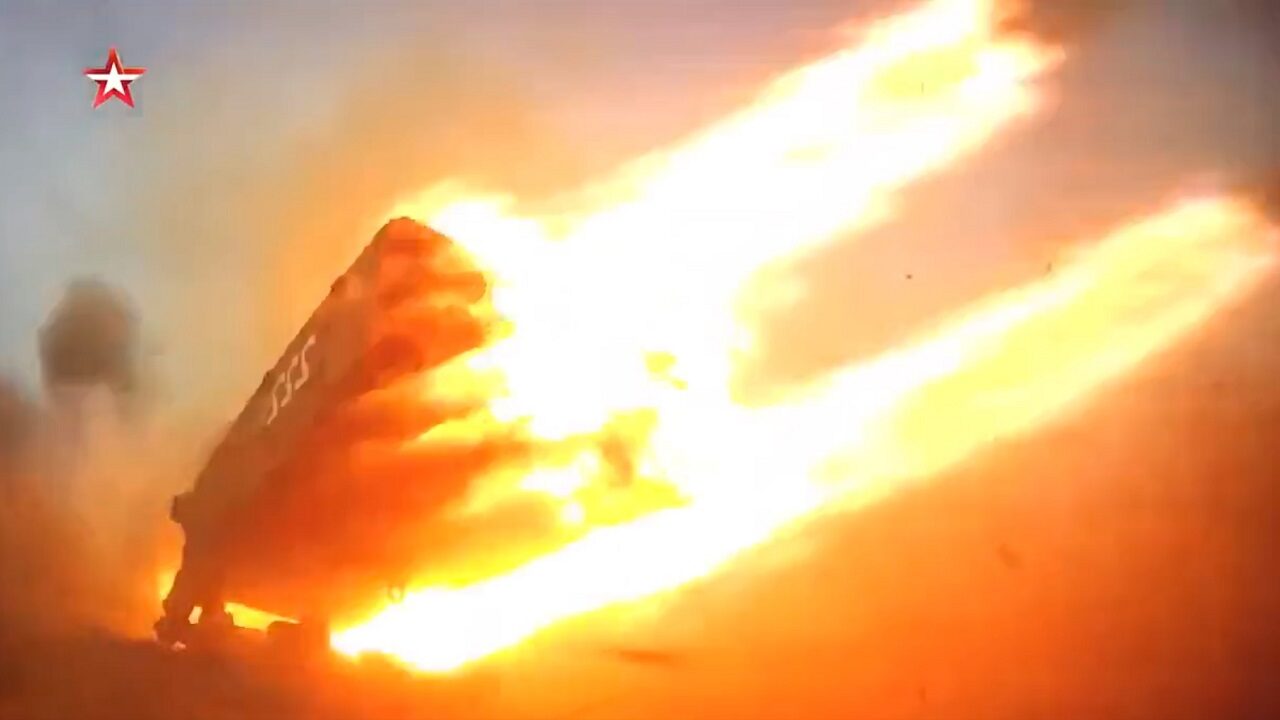Ukraine’s intelligence agencies hope that a sustained partisan campaign in Crimea can oust the Russian invader. Ukraine calls this its “De-Occupation” strategy. Crimea is the main supply route the Russian army uses to supply its forces in southern Ukraine.
Partisans have carried out attacks on Russian infrastructure in Crimea such as against the Black Sea Fleet and supply lines. Ukraine’s Main Intelligence Directorate reported an attempted attack in March against a depot where Kalibr cruise missiles that routinely strike targets across Ukraine are stored.
A report in the Kyiv Post claims that partisan groups have been organized in the territory. They claim to have memberships in the thousands; however, that cannot be independently confirmed.
They provide intelligence such that Ukraine’s military can strike at targets in Crimea and stage demonstrations of defiance. These include raising the Ukrainian flag and tying yellow ribbons, a symbol of the Ukrainian resistance to Russian occupation.
“When he opens Telegram, when he opens online publications, YouTube, and sees everywhere the Yellow Ribbon, or some other actions of the Ukrainian resistance forces, he understands he doesn’t belong here,” an anonymous Yellow Ribbon coordinator told NV.UA.
Ukrainian Special Forces Recruit Partisans
Ukrainian Special Forces established a Ukrainian National Resistance Center that has taken the lead in organizing, training, and in recruiting members of the resistance movements.
A Crimean Tatar group called ATESH mobilized to “undermine the Russian army in the rear” and first declared its existence in September 2022. Tatars comprise 13% of Crimea’s population but comprise approximately 85% of the arrests by Russian authorities. Most of what is known about ATESH stems from Telegram posts. The Ukrainian hacker group Beregrini claimed that ATESH was the brainchild of the Ukrainian Center for Information and Psychological Operations (CIPSO), a component of Ukraine’s Special Forces.
Tatar partisans claim to have recruited up to 4,000 Russian soldiers to “survive the war” by sabotaging their own equipment.
“If YOU are a serviceman of the Russian Federation or a fighter of the Wagner PMC, you may find this information useful,” Atesh so advertises its Atesh school.
Such advice includes ways to sabotage the gearbox of a BMP-3 infantry fighting vehicle or cause the engine of a T-72B3 tank to overheat. The group says to Russian soldiers that they can “just sit there and get paid while you wait for your equipment to be repaired.”
Atesh agents in the Russian army are supposed to provide intelligence to the Armed Forces of Ukraine in Kyiv information about their headquarters, warehouses, and equipment. It claimed responsibility for the Oct. 8, 2022 attack on the strategic Kerch Bridge linking Crimea with the mainland.
Russia Claims Counterintelligence Operations Against Ukrainian Agents
Russian media sources acknowledge that Ukrainian intelligence has been involved with the organization of a campaign against their occupation of the territory they have controlled since their 2014 invasion and annexation of Crimea.
The Russians have stepped up their counterintelligence operations against Ukrainian agents.
Russia’s Federal Security Bureau (FSB) arrested a man they claimed was a Ukrainian agent working on behalf of Ukrainian military intelligence. Earlier this month the FSB arrested a man they said had been collecting intelligence on Russian military assets in Crimea. The FSB also captured another alleged Ukrainian agent they claimed had a cache of foreign-made plastic explosives and who planned to blow up a railway. Another purported Ukrainian spy who was transmitting information about the transportation of goods in and out of Crimea was arrested on August 15.
In June, a man allegedly working on behalf of Ukrainian intelligence blew up a pipeline in Crimea.
Ukraine Steps Up Crimea Attacks
Such actions show that Ukraine has an established intelligence network in Crimea that it is exploiting to strike at Russia from the rear.
Recent attacks by Ukrainian Marines against Crimea, strikes against Russian naval vessels in Sevastopol, at Russian fleet headquarters, and against a Russian-controlled air base show that Ukraine is determined.
Taking back Crimea will require rethinking Ukraine’s overall strategy for breaking through Russia’s front line. Ukraine is determined, but so is Russia. The signs suggest that a Russian pullout is a far-off dream.
In the meantime, the spy war in Crimea continues.
John Rossomando is a defense and counterterrorism analyst and served as Senior Analyst for Counterterrorism at The Investigative Project on Terrorism for eight years. His work has been featured in numerous publications such as The American Thinker, The National Interest, National Review Online, Daily Wire, Red Alert Politics, CNSNews.com, The Daily Caller, Human Events, Newsmax, The American Spectator, TownHall.com, and Crisis Magazine. He also served as senior managing editor of The Bulletin, a 100,000-circulation daily newspaper in Philadelphia, and received the Pennsylvania Associated Press Managing Editors first-place award for his reporting.
From the Vault
‘Vacuum Bombs Destroyed’: Ukraine Footage Shows Putin’s Thermobaric Rockets Destroyed
BOOM! Ukraine Video Shows Precision Strike on Russian Air-Defense System

